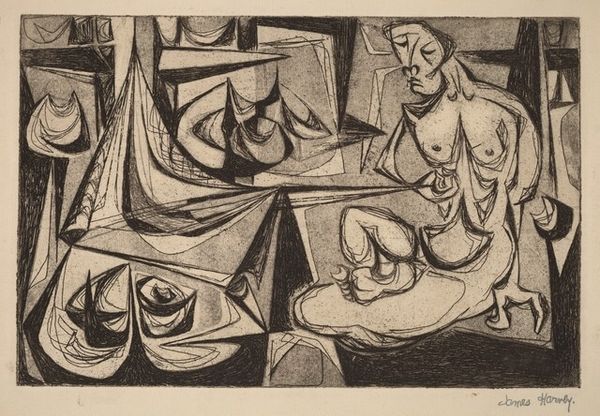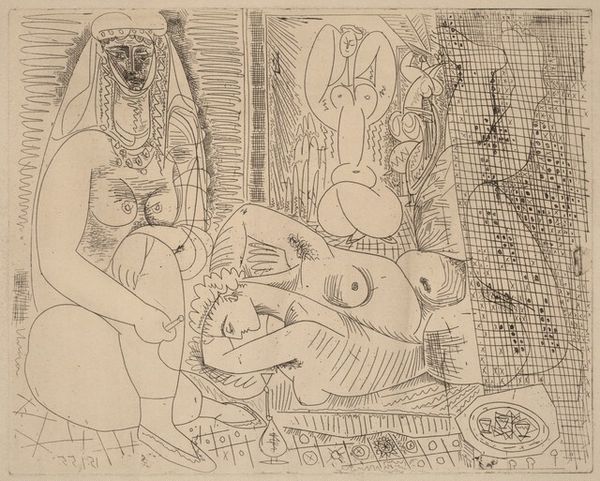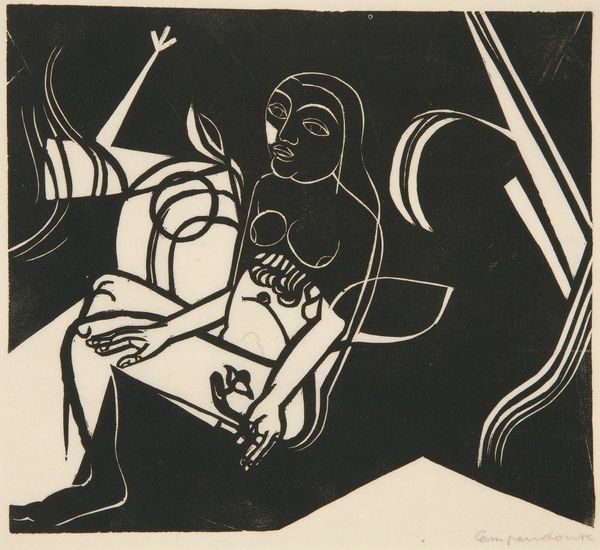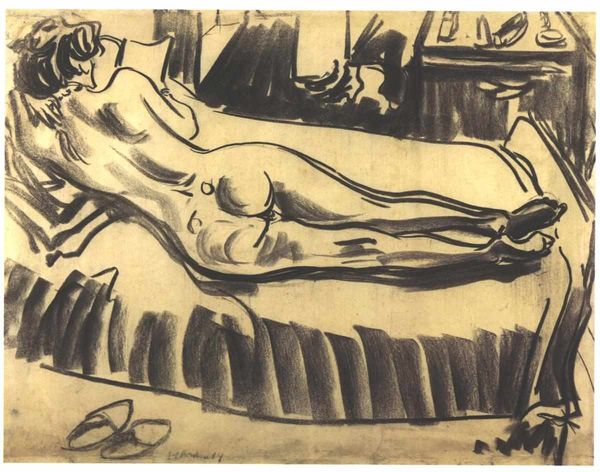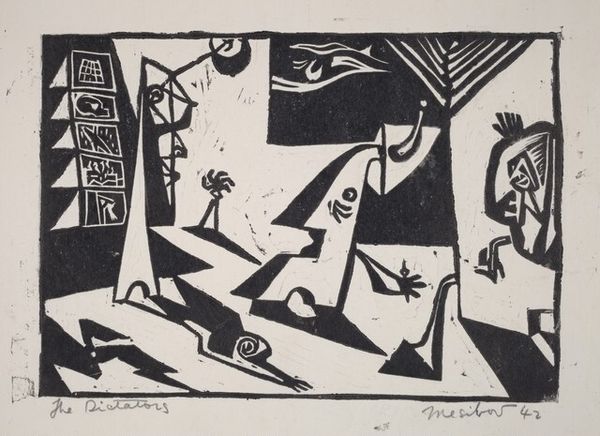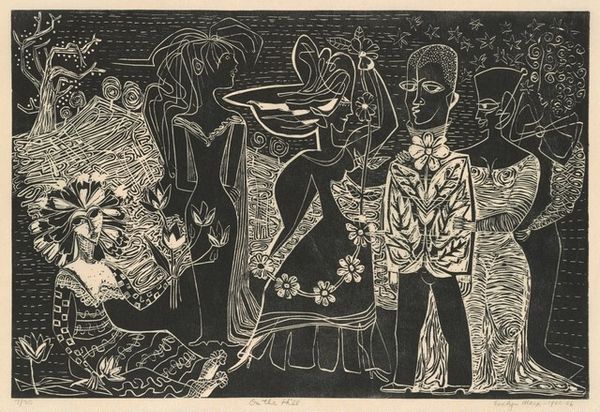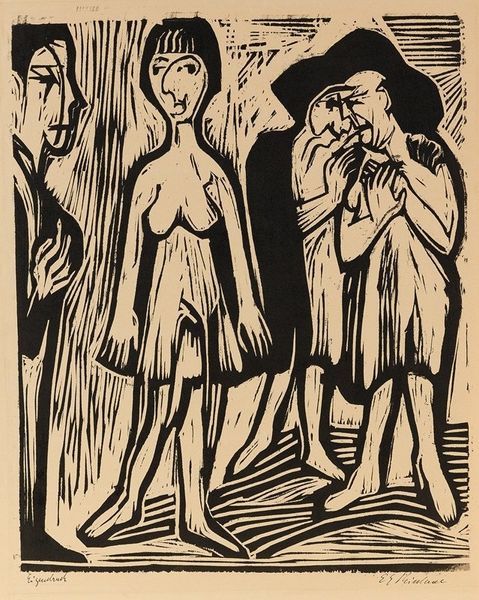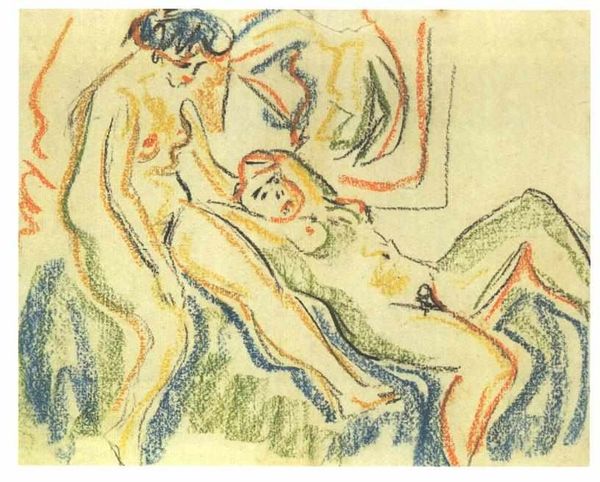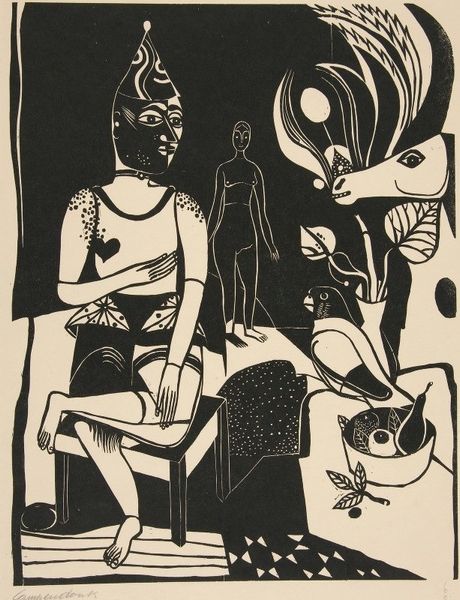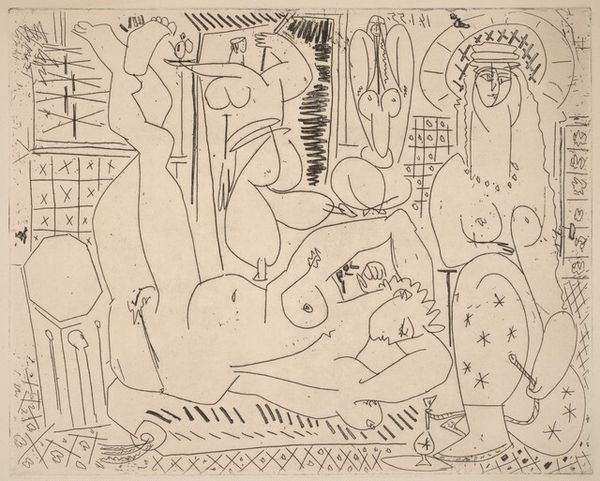
print, linocut
#
cubism
# print
#
linocut
#
figuration
#
female-nude
#
history-painting
#
nude
#
modernism
#
erotic-art
Copyright: Pablo Picasso,Fair Use
Editor: This is Picasso’s linocut, "Two Nude Women," from 1946. I'm struck by how stark the black and white contrast is, and by how monumental and almost confrontational the figures are rendered. How do you interpret this work, considering Picasso's artistic evolution? Curator: Picasso's stylistic choices in 1946 cannot be divorced from the sociopolitical milieu. Remember, the aftermath of WWII cast a long shadow. The harshness you perceive isn’t just aesthetic, but a reflection of a world grappling with trauma and disruption. Picasso uses Cubism, which itself challenged conventional ways of seeing, to depict the female form not as a passive object, but as fragmented and reassembled, thus resisting the male gaze and traditional portrayals of women. How does this contextualization affect your understanding of the "confrontational" aspect you mentioned? Editor: It definitely adds a layer of complexity. So it's less about the male gaze of the viewer, and more about a deliberate disruption of artistic expectations. The linocut medium adds a rawness. Curator: Exactly! Consider the simplification of form and the boldness of the lines. The simplification of forms invites questions about the gaze of the figures and challenges power dynamics inherent in traditional nudes. This interplay subverts the art historical expectations associated with such subjects, prompting us to analyze the narrative Picasso creates through the strategic use of distortion. What stories emerge? Editor: This makes me reconsider my initial reaction entirely. It's not just about seeing, but about actively questioning what is being shown and why. Curator: Precisely! That active questioning is key to unlocking the rich social narratives embedded within art. It moves beyond mere observation to a critical dialogue with the artist and the world they inhabited. Editor: I now appreciate how a work seemingly focused on form can spark conversations around history, power, and representation. Thank you! Curator: Indeed. Art becomes a lens through which to view our shared past and present.
Comments
No comments
Be the first to comment and join the conversation on the ultimate creative platform.
